This article marks the fourth in a series of articles covering the various types of heraldic flags found in the Middle Ages, providing enough of an overview to their use to inspire the reader to design and paint their own. Each article will describe the distinguishing features of the flag type, including their typical use in period, using examples from period art where available. At the end of the article, I will guide the reader through the process of designing a new flag using armory appropriate both to the SCA and history. We continue this series with one of the earliest heraldic flags: The gonfalon.
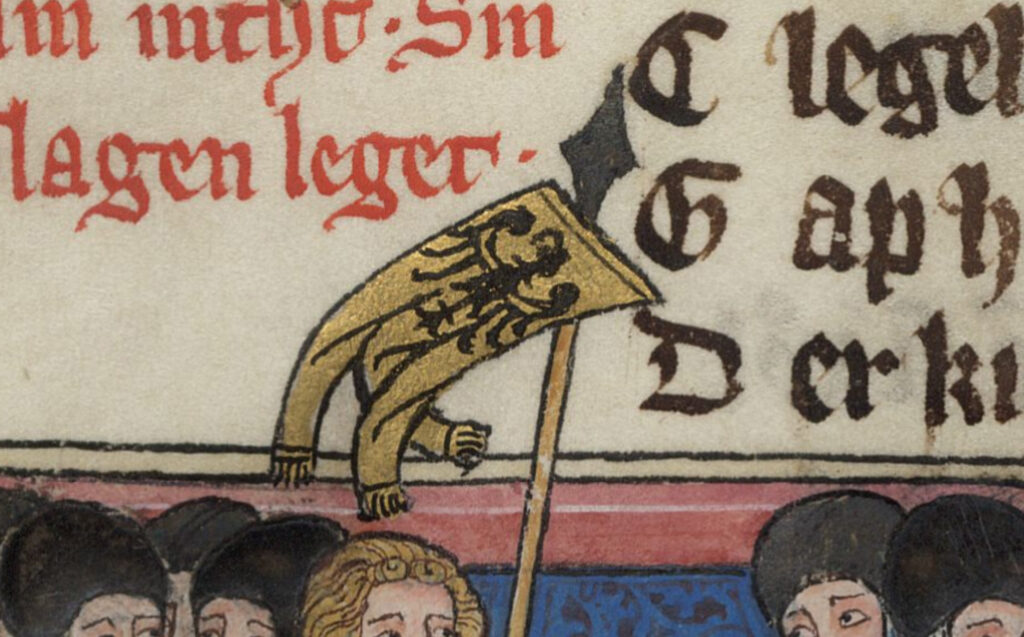
The gonfalon is a flag which hangs from a horizontal bar, which itself is affixed to a vertical pole by a hook or ropes. It follows in the tradition of the Roman vexillum, which was a square or rectangular flag decorated with fringe.
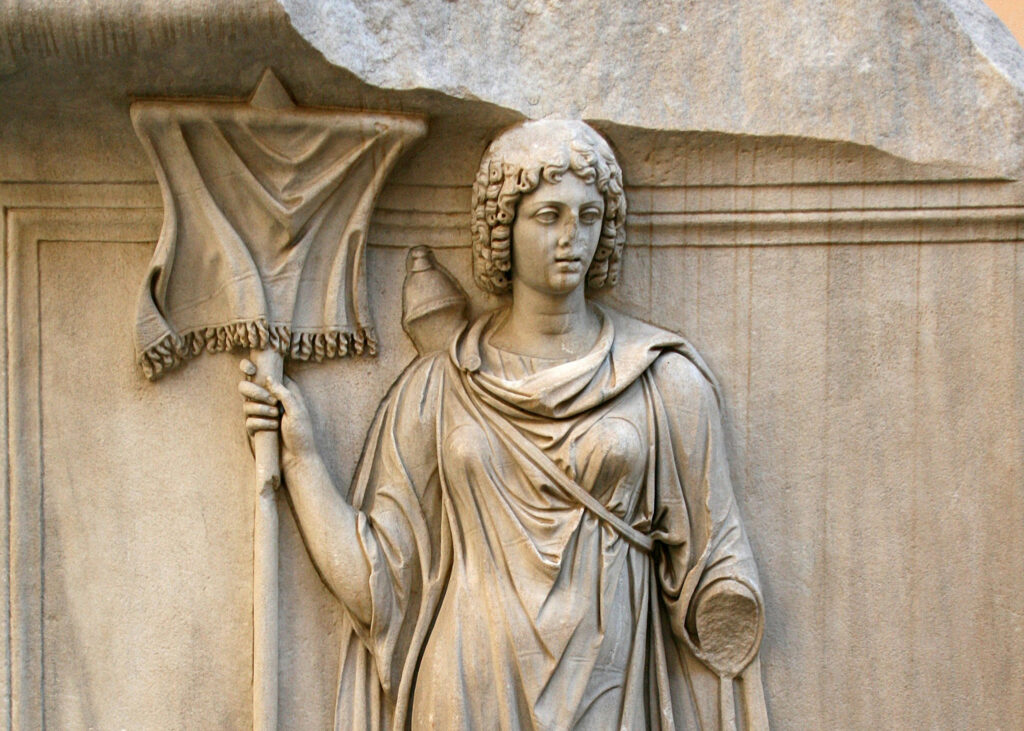
Originally a military flag, the vexillum took on a religious meaning during the reign of Constantine the Great, when the chi-rho was added to the top of the upright pole and portraits of the Imperial family were added to the flag itself. This form of the vexillum was known as the labarum. In time, these portraits would give way to depictions of the same chi-rho Christogram, crosses, and other religious iconography.
Use of a flag hung from a horizontal bar continued into the Middle Ages. These flags typically retained the religious significance of the labarum, and crosses frequently served as the upright pole for displays and procession. But while the vexillum always appeared square with fringe, these new gonfalons developed distinctive dags.
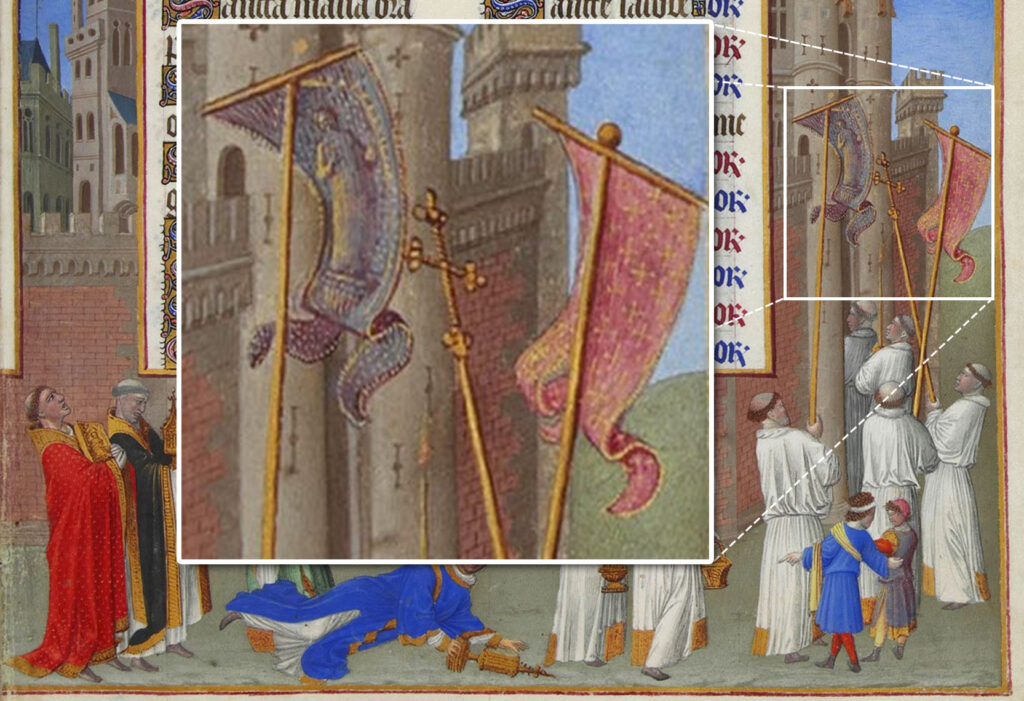
Despite the overwhelming religious overtones and the general popularity of the form among the clergy generally, we do have examples of gonfalons being used primarily to display heraldry. The first example below is from a roll of arms that routinely displays a shield with the cross of Saint George alongside other shields.

The next examples are from Spiezer Schilling, which depicts the arms of Count Pierre de Savoie, Gules, a cross argent, and the Knights of the Teutonic Order, Argent, a cross sable, in shields, banners, pennons, and gonfalons (click for larger image).

Below is another depiction of a gonfalon in the arms of the Grand Master of the Teutonic Order, this time in a catalog of captured flags from 1410.

Of the few extant heraldic flags from the Middle Ages, one of the more sumptuous examples is the 14th century Swiss gonfalon, below. The quartered arms of Savoy and Blonay are depicted with elaborate embroidery and applique. The weight of the flag and the location of the dags at the bottom edge indicate its use as a gonfalon.
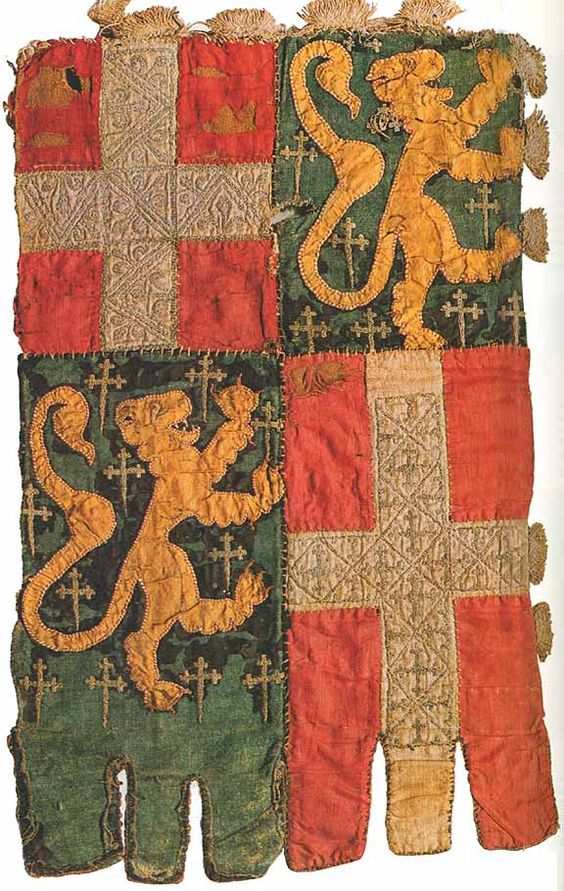
Even when gonfalons focused primarily on religious imagery, heraldic elements frequently graced the periphery of the design. Below is a large 16th century embroidered and painted gonfalon from Milan depicting Saint Ambrose. Several cartouche-shaped shields adorn the bottom of the gonfalon.
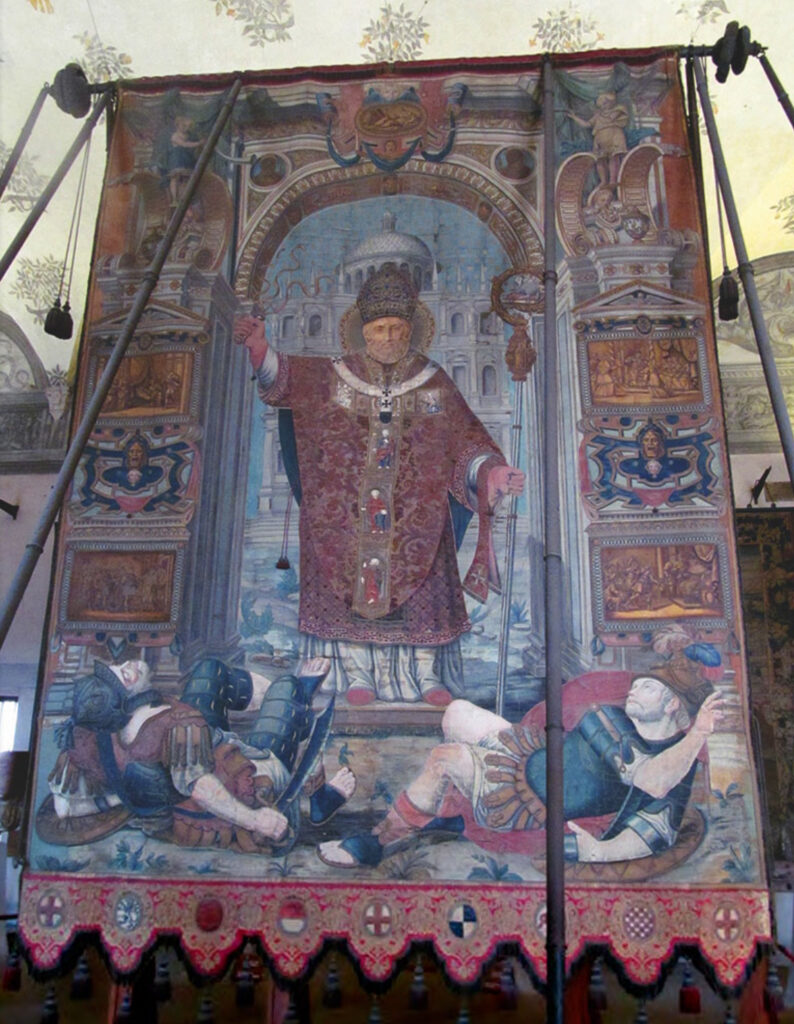
Dag Shapes
Generally, gonfalons have a square main body with at least two dags (swallowtailed) but more frequently have three dags with squared ends, as seen in the examples above.
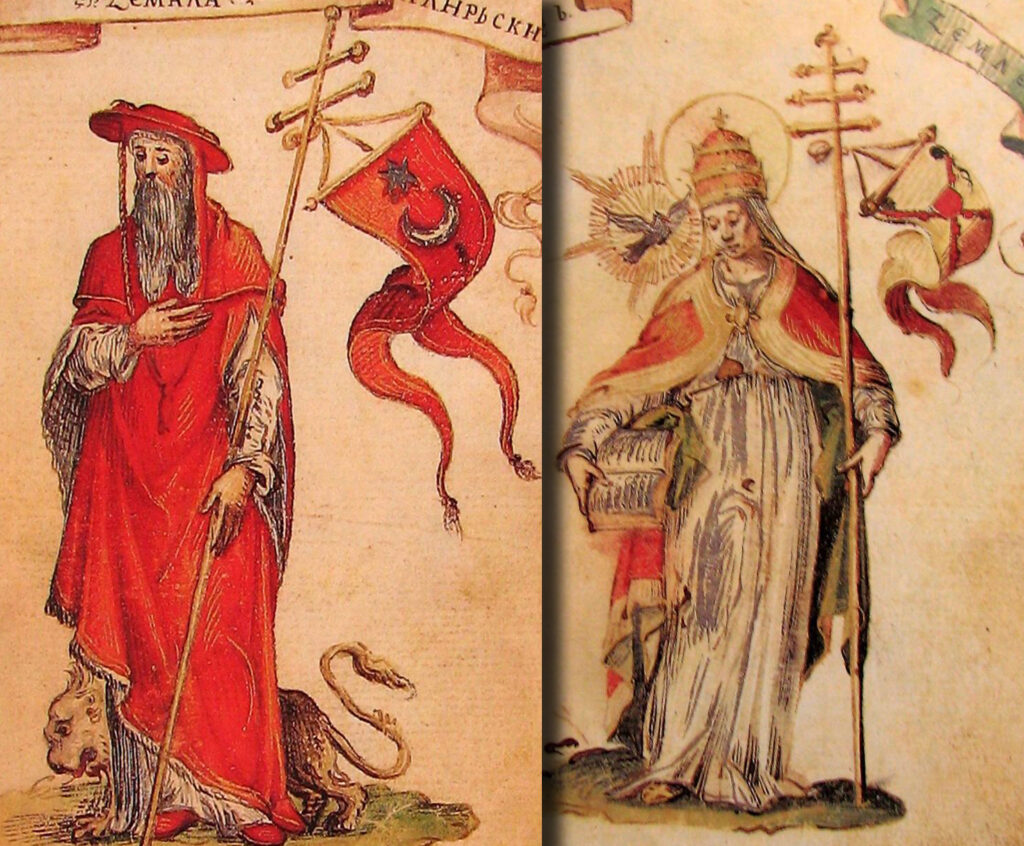
Occasionally, gonfalons appear to have a pointed pennon shape, as in the examples below.

Flat-bottomed gonfalons, following the model of the vexillum, are seen most typically in non-heraldic gonfalons, but there are examples of heraldic versions as well, particularly with “trumpet banners,” or gonfalons mounted to straight trumpets.

Here’s an example of a rectangular gonfalon (likely for a trumpet) that displays a full achievement.
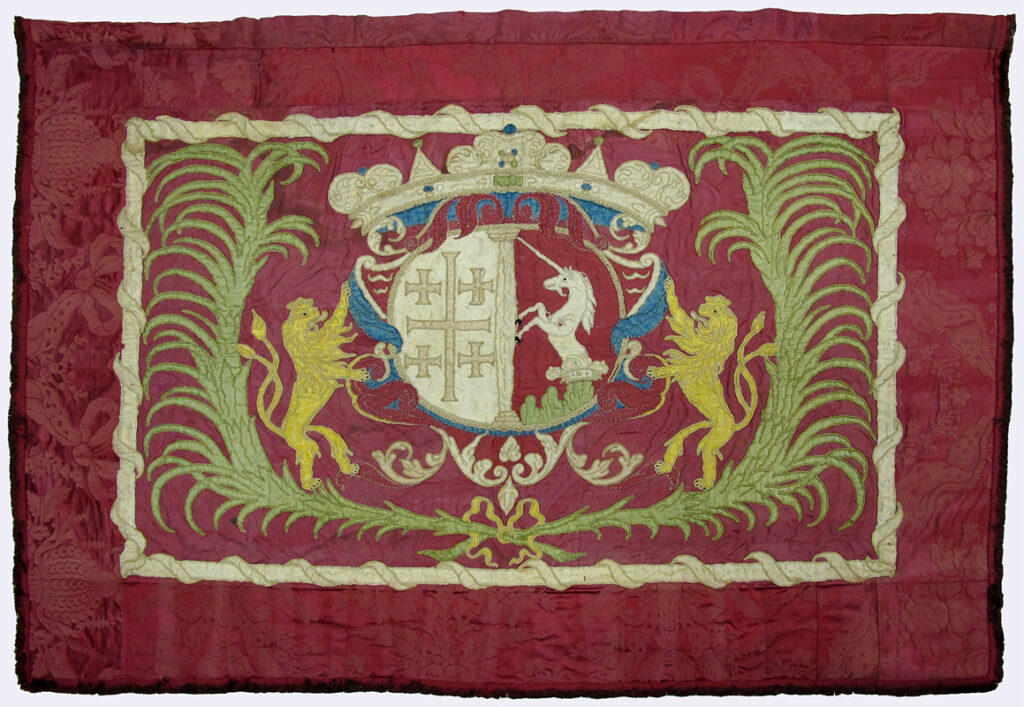
How do I design my own gonfalon?
Because of the wide variety of subjects and designs on historical gonfalons, the format provides the greatest opportunity for artistic expression. Gonfalons can display arms alone, or achievements both simple and complex.

Gonfalons can display multiple pieces of armory in a single design. Related badges (such as a baronial populace badge and an officer badge) can be combined into a new composite image that expresses the intersection between those badges (such as an officer of a barony). A clever artist might also incorporate the aesthetic of religious gonfalons to display their armory in a way that informs the meaning of the heraldry itself; for example, in the design below right, the rainbow wings evoke the modern LGBTQ+ pride flag, which gives context to the Clan Blue Feather badge flying above.

What other kinds of heraldic flags are there?
For more information about heraldic flags, please see the options below:
Standard – A large, tapering flag used to display the badges of its owner, a rallying point for armies
Banner – A square or tall rectangular flag, used to display arms
Pennon – A smaller flag used to display arms or single badges, great for battlefield identification